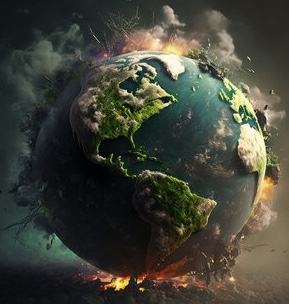
Earth at 1.5 C

Earth at 1.5 C


At 1.5 degrees, scientists predict that ten times more people will die from extreme heat across the world. In some places this will lead to droughts and water shortages, and famines will become common. In other places, floods will force people out of their homes. As forests around the world shrink and disappear, far more plants and animals will go extinct. Wildfires will burn in more parts of the earth.
Unless there is a dramatic change in human behaviour, global heating will reach 1.5 0 C by the early 2030s. There are obvious effects, such as heatwaves. There will be 30,000 deaths per year from hot and humid weather in Europe alone, ten times more than today. But this also leads to droughts. In developed countries, the will be up to 10% less fresh water available, much more in poor and dry areas. Glaciers, which are the source of rivers for most of the world’s population, shrink by a third. This is disastrous for farming, which relies on water supply. We can expect a 20% reduction in food productivity. People in poor countries experience famine and hunger much more often. As the land dries out, it is more likely to catch fire. The risk of wildfires will increase by 20% across a quarter of land. Up to 40% of rainforests could become grassland. This in turn will speed up the extinction rate of plants, animals and fungi. The oceans will heat up so much that most coral reefs die. Storms and floods become more frequent and severe. 46 million people live in flood risk areas, reaching half the population in some low-lying countries.